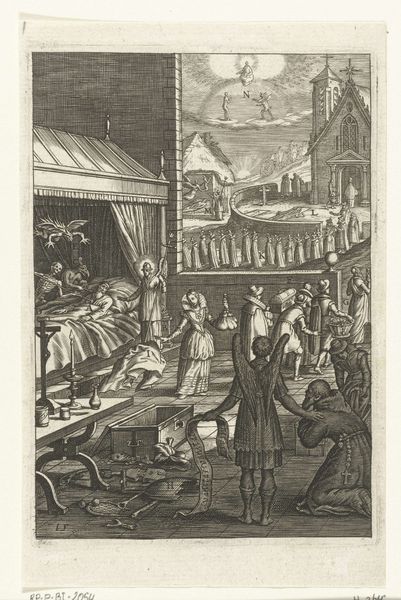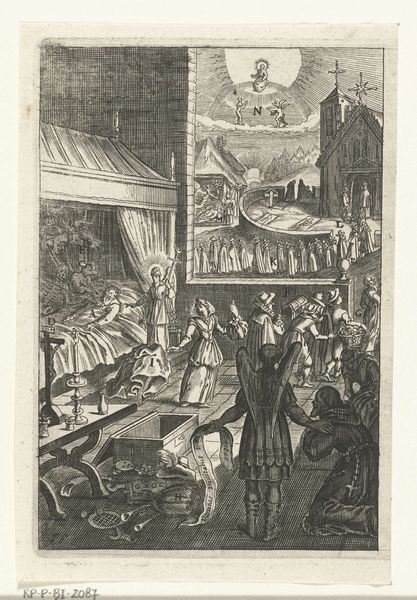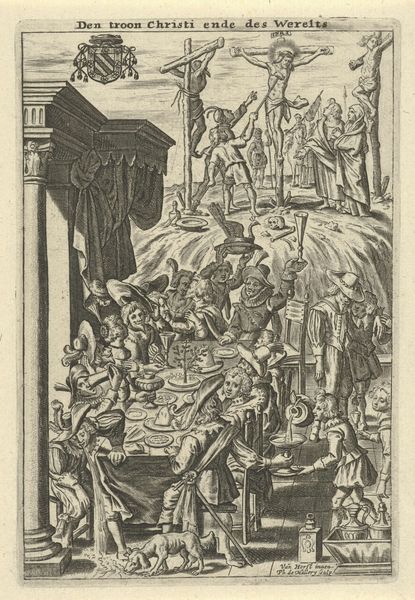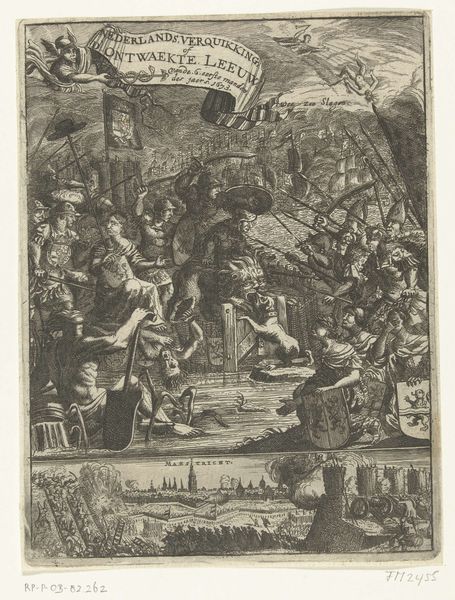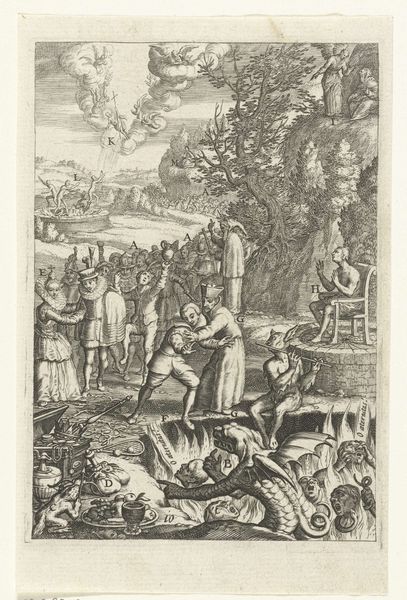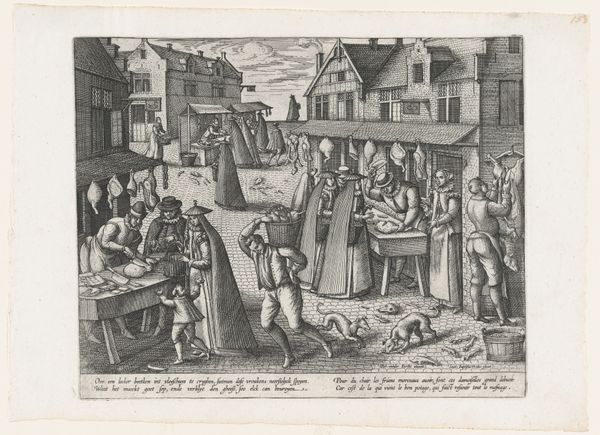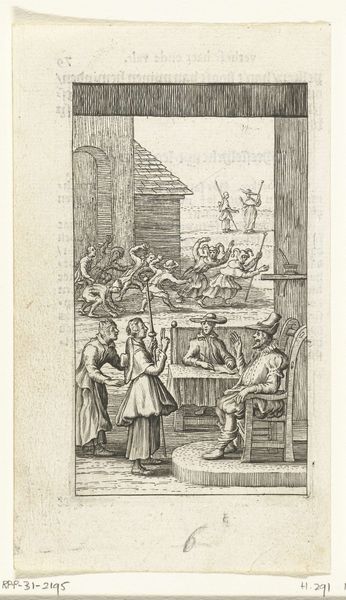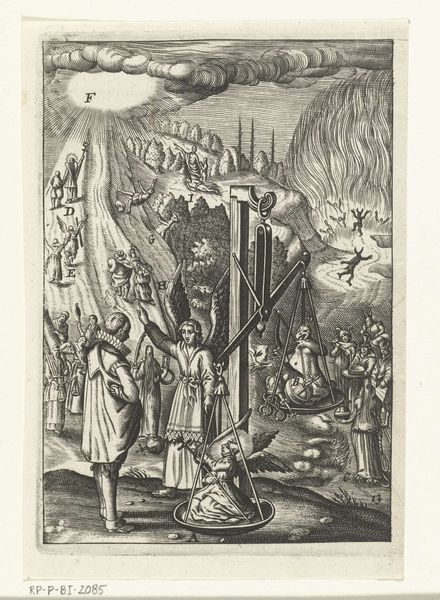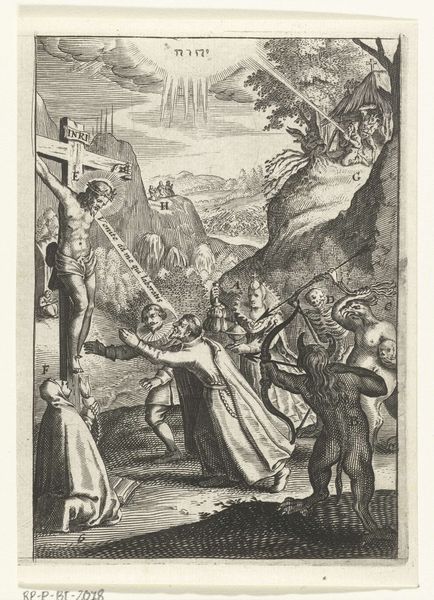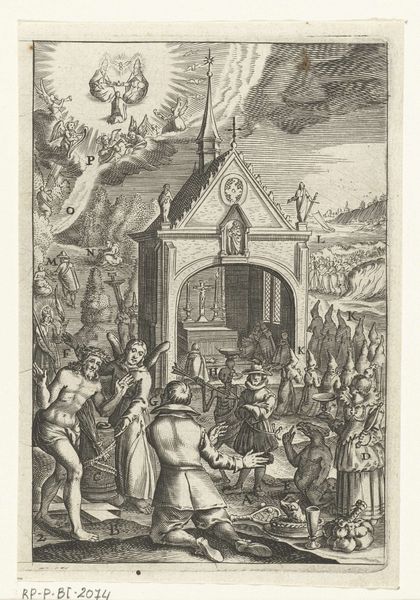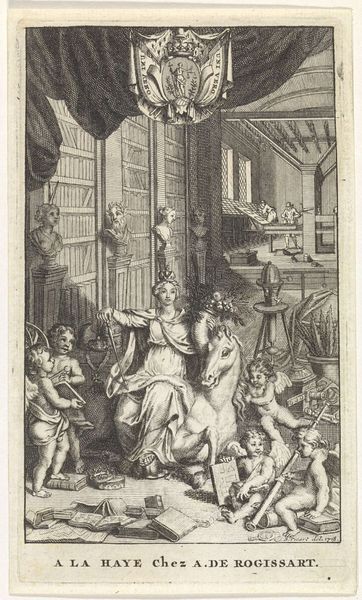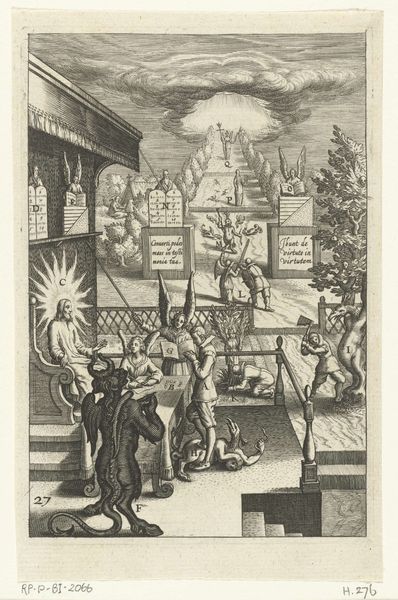
Embleem met engel die geestelijke toont dat de duivel na de dood van een zondaar de ziel komt halen 1620 - 1623
0:00
0:00
anonymous
Rijksmuseum
print, engraving
#
medieval
#
allegory
#
narrative-art
#
baroque
# print
#
vanitas
#
history-painting
#
engraving
Dimensions: height 134 mm, width 92 mm
Copyright: Rijks Museum: Open Domain
Curator: This engraving, created between 1620 and 1623, is entitled "Embleem met engel die geestelijke toont dat de duivel na de dood van een zondaar de ziel komt halen," or, in English, "Emblem with angel showing the cleric that the devil comes to fetch the soul after the death of a sinner." It's attributed to an anonymous artist and is currently held in the collection of the Rijksmuseum. Editor: What immediately strikes me is the sheer dynamism achieved through line and composition. The artist creates such a strong sense of depth through the placement of objects. And despite the somber subject matter, the density of detail gives it a sort of unsettling energy. Curator: The artist is working within a visual language steeped in Baroque allegory and the medieval vanitas tradition. This isn't simply about death; it's a commentary on earthly sins and the eternal consequences of actions during one’s lifetime. The work participates in broader narratives about salvation, damnation, and power structures of the church during the 17th century. The positioning of clergy as witnesses also has social and political significance. Editor: I’m drawn to the contrasts—the celestial realm rendered in light, airy lines above, juxtaposed against the dense, claustrophobic scene of the deathbed below. And observe how the architectural elements, especially the clean lines in the left, heighten the contrast with the swirling vortex to the right. Curator: That visual tension speaks to the psychological turmoil at the center of the work—a struggle between earthly pleasures and spiritual responsibility. I think the presence of both sacred and profane authority figures within this compact work further contextualizes a societal crisis of morality. Editor: Indeed. The swirling movement draws the eye constantly around the frame. Even the details of objects such as clothing serve not merely to depict, but also to augment the swirling rhythm of death and consequence. This focus on circular movement in conjunction with highly contrasted scenes reveals a strong conceptual approach to temporality within a static print. Curator: Absolutely, viewing this engraving reminds us how art reflects complex ideas about the intersection of human desire and social governance within systems that encourage individuals to confront and contemplate morality and mortality. Editor: This detailed orchestration of imagery forces us to confront life's transience—a visual poem wrought in miniature that encapsulates the eternal drama.
Comments
No comments
Be the first to comment and join the conversation on the ultimate creative platform.
